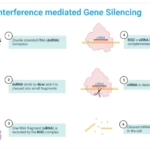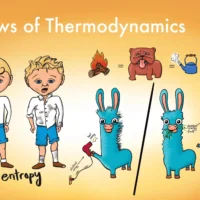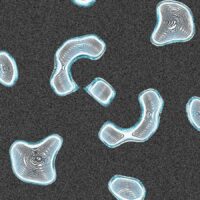Barbara McClintock’s groundbreaking work in maize led to the discovery of controlling elements, now known as transposable elements. These genetic elements, often termed “jumping genes,” can move within the genome, altering gene expression and causing genetic variations. McClintock’s studies identified two primary types of controlling elements in maize: Dissociation (Ds) and Activator (Ac).
This research revealed that these elements could move within the genome, disrupting normal genetic processes and contributing to phenotypic changes. This discovery earned her the Nobel Prize in Physiology or Medicine in 1983, recognizing her contributions to understanding genome plasticity and gene regulation.
The Ac-Ds System
Activator (Ac)
The Ac element is autonomous, meaning it can move independently within the genome. It encodes the enzyme transposase, which is essential for transposition.
Dissociation (Ds)
The Ds element, in contrast, is non-autonomous and cannot move by itself. It requires the presence of Ac to transpose, as it lacks a functional transposase gene. Instead, Ds depends on the transposase enzyme produced by the Ac element to facilitate its movement.
Structure of Ac and Ds Elements
The structural differences between Ac and Ds elements contribute to their distinct functions:
Ac Element
The Ac element is a fully autonomous unit about 4,563 base pairs in length, containing inverted repeats (IR) at each end. It encodes a complete transposase gene necessary for transposition. These inverted repeats are sequences that the transposase enzyme recognizes, allowing Ac to catalyze its own movement.
Ds Element
Ds elements are typically derived from Ac elements through deletions or other mutations that inactivate the transposase gene. Although they vary in length and sequence, they retain the same inverted repeats at their ends as Ac elements, enabling the transposase produced by Ac to recognize them and facilitate their movement. Without the transposase gene, Ds cannot move independently and is termed non-autonomous.
Mechanism of Ac-Ds Transposition
The transposition of Ac and Ds elements occurs through a cut-and-paste mechanism facilitated by the transposase enzyme encoded by Ac. Here’s how the process works:
- Recognition: The transposase recognizes and binds to the inverted repeats at the ends of both Ac and Ds elements.
- Excision: The transposase then makes cuts at these sites, excising the element from its original location in the genome.
- Insertion: After excision, the element is inserted into a new target site within the genome. In Ac’s case, it can repeat this process independently, moving from one location to another.
- Target Site Duplication: When an element is inserted into a new site, a short direct repeat sequence is often created, flanking the element. This duplication results from the way transposase cleaves the DNA.
Phenotypic Effects of Ac and Ds Elements
McClintock’s experiments revealed that Ac and Ds elements could influence the phenotypic traits of maize. When Ds elements are inserted into a gene, they can disrupt its expression, leading to observable changes in the plant’s appearance. For example:
- Chromosomal Breakage: McClintock observed that Ds elements could cause breaks in chromosomes when positioned near Ac elements. This breakage led to chromosome rearrangements and alterations in gene expression.
- Mutations and Gene Inactivation: If a Ds element inserted itself into a functional gene, it could disrupt that gene’s function, leading to a mutant phenotype. For instance, if Ds disrupted a pigment gene, it could alter the color of maize kernels.
McClintock found that these elements moved unpredictably, making it challenging to map their exact locations. Ac elements, being autonomous, could continually transpose, causing instability in the genome. In contrast, Ds elements required the presence of Ac and were stable without it.
McClintock’s Experimental Findings
In the 1950s, McClintock identified Ds elements in maize that caused chromosome breakage at specific sites. Her experiments showed that the phenotypic effects of Ds depended on the presence of Ac. When Ac was present, Ds could move within the genome, resulting in various effects on gene expression. McClintock noted that Ac and Ds did not remain in fixed positions on the chromosome; instead, they could move to different locations in different maize plants.
McClintock’s observations were revolutionary because they challenged the prevailing view of a static genome. Her work suggested that the genome was dynamic, capable of restructuring itself through the movement of these controlling elements. This discovery fundamentally altered our understanding of genetics and opened new avenues for studying gene regulation and genome evolution.
Legacy of McClintock’s Discovery
Barbara McClintock’s work on controlling elements laid the foundation for the study of transposable elements across all domains of life. Her Ac-Ds system in maize became a model for understanding transposable elements in other organisms, from bacteria to humans. Transposable elements are now recognized as major contributors to genetic diversity and evolution, with roles in gene regulation, genome plasticity, and the generation of genetic variations.
McClintock’s concept of controlling elements, initially met with skepticism, is now central to our understanding of how genomes evolve and adapt. Her discovery that genes are not static but can move and reorganize has had profound implications for fields such as molecular genetics, evolutionary biology, and biotechnology.

















